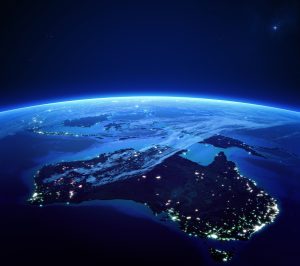There has been a noticeable rhetorical shift from the Australian government in recent years about the country’s approach to foreign policy. The prime minister, foreign minister, and defense minister have all used the phrase “whole-of-nation” to describe how to best utilize Australia’s tools of statecraft, defend and advance its interests, and build greater international influence.
This push for a more purposefully coordinated Australian statecraft has been driven by an increasingly challenging and complex external and security environment, one where a more efficient and effective use of national resources is required. There is a pervasive sense of crisis, created by the complexity of cascading challenges that cut across sectors of society and defy institutional siloing.
To those focused on the climate emergency, it is self-evident that dealing with a problem of this magnitude will require that all Australia’s capabilities be brought to bear. For those concerned about a worsening geopolitical environment, again it is self-evident that a coordinated approach is required. With the Indo-Pacific the epicenter of this century’s great power competition, it is no small matter for Australia to want to contribute to the region’s stability, prosperity, and security. This means utilizing a range of resources to seek an Indo-Pacific that is peaceful, where international law is respected, where coercion is minimal, and where economies and societies can pursue their own development.
There is also a sense of having to do more with what we have. While Australia will continue to grow in most important respects in absolute terms, its relative weight in the Indo-Pacific is likely to diminish. In a broader global context, a similar shift is likely with relative power moving away from Western countries, including Australia’s traditional allies. In a world where Australia and its allies occupy a less dominant position in the global order, the statecraft of rivals and adversaries becomes more threatening.
In this sense, some use of “all tools of statecraft” and “whole-of-nation” language can be understood in part as a response to what might be called the “total statecraft” challenge posed by countries such as China. Consistent with the ideology of the Chinese Communist Party, no part of the Chinese state or society is immune from utilization in support for its international objectives.
While it is neither feasible nor desirable for the Australian government to aspire to such command of its people and resources, the nature and scale of the China challenge compels a more coherent and comprehensive approach by Canberra – to some extent a “top down” approach, albeit with the recognition and maintenance of the asset of Australia’s liberal democracy.
Policymakers are concerned about issues such as the need for a stronger defense industrial base (including better links to industry in general), relatively low levels of research and development in Australia, and the general issue of “preparedness” – including social cohesion, security of critical infrastructure, and civil mobilization. Put in these terms, there are many potential positives from a whole-of-nation approach. According to Prime Minister Anthony Albanese, “national security demands a whole-of-nation effort. It also presents a whole-of-nation opportunity.”
There is a sense that Australia needs to avoid “foreign policy autopilot.” A new breadth of actors and resources and a new depth of coordination and coherence must be injected into Australia’s international and security policy.
“Whole-of-nation” language carries a sense of urgency that Australia’s people, economy, society, and public institutions must become more alert to their role in the international sphere and better organize themselves to meet these exceptionally challenging times. This will require that the depth and diversity of Australia’s resources, assets and capabilities – across both the state and civil society – be identified, harnessed, and applied to secure the country’s future, in a way that increases their productivity and effective service of Australia’s objectives.
As a first step, this means that Australians need to update their mental model of who does foreign policy. Yes, core international policy actors like the Department of Foreign Affairs and Trade and the Department of Defense pursue international policy as their core mission. But there are a range of other actors that also interact internationally. These include other federal departments and national institutions, state, territory and local governments. Beyond this, many overlapping sectors have international impact, including science and technology, business and investment, education, First Nations, diaspora groups, civil society, culture, sport, and media.
Australia is now operating in an international environment where its traditional modes of statecraft – and traditional dependencies – have become less effective and less reliable. This requires a serious rethink of how it can best defend, maintain, and advance its national interests. The challenges of the era are such that complacency is no longer affordable. A greater awareness of all its capabilities and how they can best be harnessed in a whole-of-nation effort is now a necessity.
Asia Pacific Development, Diplomacy and Defence Dialogue’s new report, “A Whole-of-Nation Approach to International Policy” is available now.

































